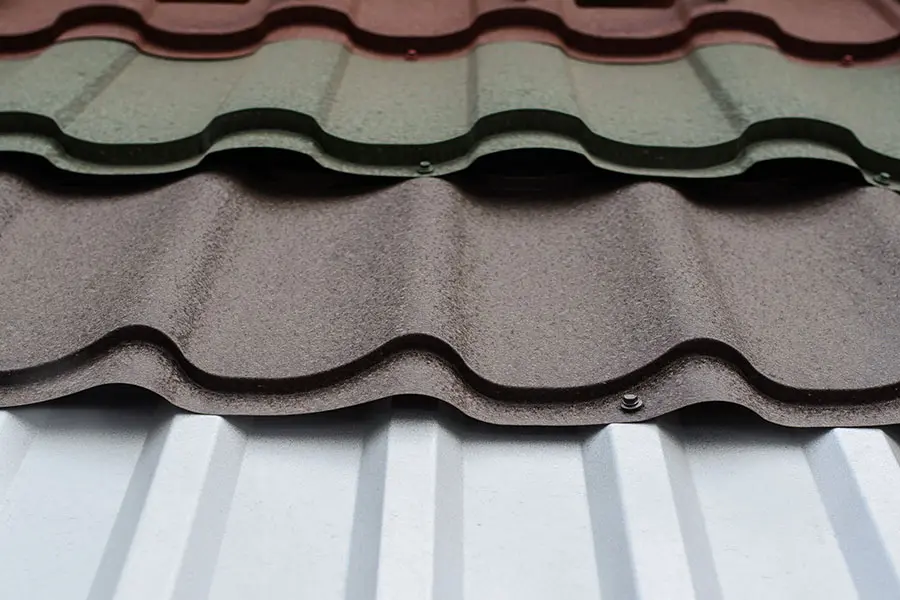Contrasting Prices Among Roofing Companies in Gainesville Florida
Contrasting Prices Among Roofing Companies in Gainesville Florida
Blog Article
Finest Practices for Ensuring Appropriate Roof Ventilation
Making certain correct roof air flow is critical for the long life and effectiveness of a roof. A well balanced intake and exhaust air vent proportion, generally 1:300, plays a crucial function, with intake vents preferably placed at the reduced side of the roofing for great air access and exhaust vents at the optimal for warm air exit. Regular examinations to determine obstructions and keep clear airflow are extremely important. In addition, keeping insulation far from vents is vital to avoid air movement constraint. Comprehending these fundamental components establishes the phase for more detailed insights right into installation and maintenance methods that can considerably improve your roof's performance.
Understand Air Flow Essentials
Effectively understanding air flow essentials is necessary for making certain the long life and effectiveness of roofing systems. Effective ventilation minimizes moisture buildup and temperature extremes in the attic room, both of which can result in significant structural damage gradually. A well-ventilated roofing system assists in stopping typical concerns such as mold growth, timber rot, and ice dams, which can compromise the honesty of the roof products and the underlying structures.
The key objective of ventilation is to help with the motion of air, permitting a consistent exchange in between the exterior and indoor settings. This equilibrium is achieved via a combination of consumption and exhaust vents that work together to maintain optimum airflow. Intake vents, commonly situated along the soffits or eaves, permit fresh air to enter the attic room space, while exhaust vents, frequently positioned at or near the roofing system ridge, allow warm, humid air to get away.
Key factors affecting the effectiveness of roofing system air flow include proper placement, sufficient sizing, and making certain that both consumption and exhaust vents are unhampered. Regular examination and upkeep are crucial to recognize prospective blockages, damages, or ineffectiveness in the air flow system, thereby safeguarding the roof covering's efficiency and toughness.
Types of Roof Covering Vents
Roofing system vents play an essential function in keeping reliable attic room ventilation and, by expansion, the general health and wellness of the roof. Numerous kinds of roofing system vents are offered, each with unique advantages customized to details roofing requirements. Ridge vents, as an example, are set up along the roof's top, allowing warm, damp air to leave from the attic. They supply constant air flow and mix effortlessly with the roofline, making them both effective and aesthetically pleasing.

Soffit vents are mounted under the eaves and work in tandem with roof vents to guarantee a balanced intake and exhaust system. By enabling cooler air to go into from below, soffit vents promote the expulsion of warm air through upper vents. Gable vents, situated on the outside walls of the attic room, deal an additional effective solution, specifically in homes with saddleback roofs.
Assess Your Present Ventilation

Following, take into consideration the age and problem of your roofing products and air flow parts. Older systems may not abide by existing building regulations or might have weakened in time, minimizing their performance. Conduct an extensive examination to determine any signs of damage, such as rust, damages, or spaces that can compromise the system's performance.
In addition, measure the attic temperature and moisture levels. Heats and humidity can show insufficient air flow - roofing companies in gainesville florida. Use a hygrometer and thermostat to get accurate analyses, comparing them with outside problems. Relentless discrepancies suggest prospective concerns that need resolving.
Installment Best Practices
Effective setup of roof air flow systems is critical for making certain optimal performance and long life. Proper setup starts with comprehending the details air flow demands of the structure and the roof it covers. This entails determining the appropriate proportion of consumption to tire vents, normally sticking to the 1:300 rule, which states one square foot of ventilation for each 300 square feet of attic room floor space.

The placement of vents is equally critical. Consumption vents must be installed at the roof's lower side, often in the soffits, to enable awesome air to go into. Exhaust vents, on the various other hand, need to be installed near or at the roofing system's optimal to promote the leave of cozy, wet air. This creates an all-natural airflow that click now aids preserve temperature and dampness balance within the attic space.
Seal all vent connections diligently to stop air leakages and potential water infiltration. Use premium products and follow producer guidelines to make sure toughness and effectiveness. In addition, integrating ridge vents with baffles can substantially boost air flow performance by avoiding wind-driven rain and snow from getting in the attic room.
Eventually, precise installation of roof covering ventilation systems minimizes potential issues such as mold development, ice dams, and architectural damage, making certain the roof's integrity and the building's total health and wellness.
Regular Upkeep Tips
Uniformity in upkeep practices is fundamental to guaranteeing the long-lasting efficiency of roofing air flow systems. During these evaluations, guarantee that click to find out more vents are complimentary of debris, nests, and various other blockages that can hamper air movement.
Make use of a soft brush or a vacuum cleaner to get rid of dirt and debris from consumption and exhaust vents. Be mindful not to harm the air vent screens or louvers throughout the procedure.
Appropriate insulation is just as essential. Make sure that attic room insulation does not obstruct the vents, as this can drastically restrict air movement. If any type of insulation has actually moved or cleared up, reposition or replace it to keep an effective barrier.
Lastly, replace any type of harmed or missing out on components immediately. Damaged vents, broken tiles, or tatty flashing can all add to inadequate ventilation and needs to be addressed without delay. Routine maintenance ensures that the roofing air flow system works optimally, consequently prolonging the life expectancy of the roofing itself.
Conclusion
Guaranteeing correct roofing air flow is extremely important for maintaining the performance and toughness of a roof covering system. Adherence to the 1:300 intake and exhaust air vent proportion, paired with the strategic placement of vents, is important. Regular biannual evaluations, debris cleansing, and making certain insulation does not block air flow are essential methods. Implementing these finest techniques will promote a well-ventilated roofing system, thus minimizing potential issues connected to moisture build-up and extreme warmth, ultimately prolonging the roofing's life expectancy.
A balanced consumption and exhaust air vent ratio, commonly 1:300, plays an essential duty, with consumption vents preferably positioned at the lower edge of the roof covering for great air access and exhaust vents at the top for cozy air leave. Consumption vents, generally located along the soffits or eaves, enable fresh air to go into the attic room, while exhaust vents, often situated at or near the roofing system ridge, enable hot, moist air to get away.
Soffit vents are mounted under the eaves and work in tandem with roofing vents to ensure a well balanced consumption and exhaust system. By allowing cooler air to get in from below, soffit vents facilitate the expulsion of hot air through upper vents. Adherence to the 1:300 consumption and exhaust air vent proportion, combined with the critical placement of vents, is necessary.
Report this page